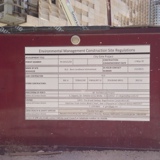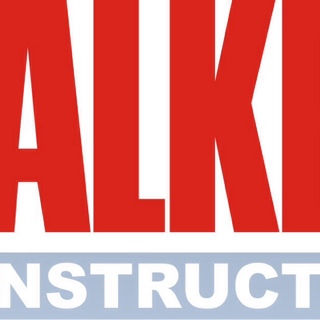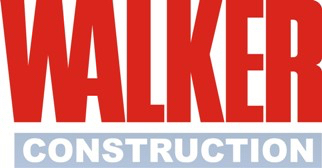Audit Scope
Audit
-
Conducted on
-
COR:
-
Workgroup Audited:
-
Site name/Code:
-
Location
-
Project No./Name:
-
Audit Team:
Audit Scope
Audit Objective
-
The objective of this contract & earthwork site audit is to ensure Gippsland Water has procedures and systems in place to actively manage the environmental risks of mobile sites. When working on mobile sites Gippsland Water's Environmental Management System (ISO14001), Gippsland Water's environmental policies, procedures, and all legal and other requirements (i.e. permit conditions, legislation) must be adhered to. The audit team has the right to issue non-conformances (NC), system improvements (SI) and/or observations (see Evaluation of Compliance Criteria for definitions) to the Responsible Officer (RO) of the project depending on the nature of the findings.
Evaluation Criteria
Observation
-
an issue that requires in order to improve the operations of the EMS and that if left in-addressed is likely to lead to a non-conformance during future audits; an example of good environmental practice that deserves recognition; or a flag or re-visit at the next audit.
System Improvement
-
an identified improvement in Gippsland Water's EMS procedures.
Non-conformance
-
a non-fulfilment of a requirement, whether that of an EMS procedure(s), or the ISO 14001:2004 standard.
Audit Instructions
-
1. All members of the audit team are to complete a copy of the checklist below, however only one copy of the audit report needs to be completed per audit. 2. This checklist is designed to be used in conjunction with the EPA Bundling Guidelines, Best Practice Environmental Management - Environmental Guidelines for Major Construction Sites, Construction Techniques for Sediment Pollution Control and Gippsland Water's Procedures (inc. ISO 14001). 3. Auditors are encouraged to use photographic evidence to supplement other notes where possible. 4. All sections of this checklist are to be completed. Any field nominated as Not Applicable (N/A) must be justified. 5. Additional copies of this checklist can be found at COR/13/13589. 6. Draft documents or other handwritten notes are to be saved into TRIM in the Contract Folder - Environment Section. 7. All final copies of this checklist are to be saved into TRIM in the Contract Folder - Environment Section. 8. Please ensure all audit document titles clearly identify the date and site at which the audit was completed. 9. Once finalised with photographs and signatures (PDF format), the TRIM reference for all final reports is to be sent to the Environment Team for inclusion in the EMS Action Plan.
Audit Checklist
Audit
Environmental Management Compliance Checklist:
-
Environmental Risk Management
-
Permits, licences and requirements (evaluate legal compliance)
-
Auditing and checklists
-
Inductions
-
Site map/Layout
-
Reporting requirements
-
Environmental Incidents
-
Comments:
Document Control & Management:
-
Are all controls listed in the EMP being implemented?
-
Have all controls listed in the Environmental Risk Register been implemented?
-
Are there any permit requirements associated with these works (i.e. Works on Waterways Permit)? If so, have all conditions been adhered to on-site?
-
Are all required MSDSs available on-site and are they up-to-date (< 7 years old)?
-
Comments:
Noise & Vibration
-
Have there been any recent noise complaints on-site?
-
Are there higher than normal noise levels on-site?
-
Are there residential houses within 50 m of works?
-
Comments:
-
Add media
Flora & Fauna
-
Are all works contained inside a controlled zone (i.e. construction impact zone)?
-
Are all works outside Tree Protection Zone(s)?
-
Has all vegetation proposed to be removed been assessed by the Environment Group?
-
Are all vegetation permit conditions being adhered to?
-
Is there any evidence of native fauna or flora in the area being impacted by the works? If so, are the necessary permits and requirements been adhered to, has the Environment Group been involved?
-
Comments:
-
Add media
Water Quality and Management
-
Are all sediment stockpiles away from water bodies and away from drainage lines?
-
Do close by water bodies have any evidence of contamination?
-
Are there any mud tracks on roads caused by the works?
-
Are works being carried out in or around natural waterways? If so, are the required permits in place and being adhered to?
-
Comments:
-
Add media
Waste & Resource Use
-
Are recycling and waste options available?
-
Is the site clean of litter?
-
Can materials or wastes on-site be re-used?
-
Comments:
-
Add media
Chemical Storage & Usage
-
Are storage areas secure to prevent unauthorised access or vandalism?
-
Are spill kits available on-site?
-
Are chemicals stored away from drainage lines and waterway(s)?
-
Does chemical and fuel bunding meet EPA guidelines?
-
Comments:
-
Add media
Cultural Heritage & Heritage
-
Has there been any significant ground disturbance on-site?
-
Has there been any evidence of aboriginal artefacts?
-
Is a Cultural Heritage Management Plan or Permit required for the works?
-
Are all cultural heritage plan or permit conditions being adhered to (i.e. protection zones)?
-
Comments:
-
Add media
Weed Management
-
Has all machinery been cleaned (when changing site locations)?
-
Are there any high threat weeds within the site area or works?
-
Comments:
-
Add media
Air Quality (emissions, air, dust, odour, GHG)
-
Is there any abnormal emissions being caused by the works?
-
Is there any visible dust plumes?
-
Is there odour on-site?
-
Are GHG accounting requirements being recorded?
-
Comments:
-
Add media
Contaminated Material (CASS, PASS, Landfill)
-
Are there contaminated materials on-site? If so, are they being managed accordingly?
-
Are contaminated materials being transported and reported accordingly?
-
Comments:
-
Add media
Sediment & Erosion Control
-
Are all silt screens and erosion control measures in place?
-
Are all stockpiles outside of Tree Protection Zone(s)?
-
Is ground disturbance being kept to a minimum?
-
Is there evidence of erosion?
-
Comments:
-
Add media
Environmental Emergency Management
-
Is there an accessible incident response procedure on-site? Is it comprehensive and meet Gippsland Water's requirements?
-
Are spill kits available on-site and in vehicles?
-
Have any environmental incidents on-site followed the correct preventative or corrective action procedure and been reported to Gippsland Water?
-
Comments:
-
Add media
Audit Report
Audit Report
1
-
Finding:
-
Evidence:
-
Action:
-
Responsible Manager:
-
Due Date:
2
-
Finding:
-
Evidence:
-
Action:
-
Responsible Manager:
-
Due Date:
3
-
Finding:
-
Evidence:
-
Action:
-
Responsible Manager:
-
Due Date:
4
-
Finding:
-
Evidence:
-
Action:
-
Responsible Manager:
-
Due Date:
5
-
Finding:
-
Evidence:
-
Action:
-
Responsible Manager:
-
Due Date:
6
-
Finding:
-
Evidence:
-
Action:
-
Responsible Manager:
-
Due Date:
7
-
Finding:
-
Evidence:
-
Action:
-
Responsible Manager:
-
Due Date:
8
-
Finding:
-
Evidence:
-
Action:
-
Responsible Manager:
-
Due Date:
9
-
Finding:
-
Evidence:
-
Action:
-
Responsible Manager:
-
Due Date:
10
-
Finding:
-
Evidence:
-
Action:
-
Responsible Manager:
-
Due Date:
11
-
Finding:
-
Evidence:
-
Action:
-
Responsible Manager:
-
Due Date:
12
-
Finding:
-
Evidence:
-
Action:
-
Responsible Manager:
-
Due Date:
Audit Report Approval
-
Workgroup Manager:
-
Select date
-
Manager Environment Team:
-
Select date
-
Lead Auditor:
-
Select date
-
Auditor:
-
Select date
















